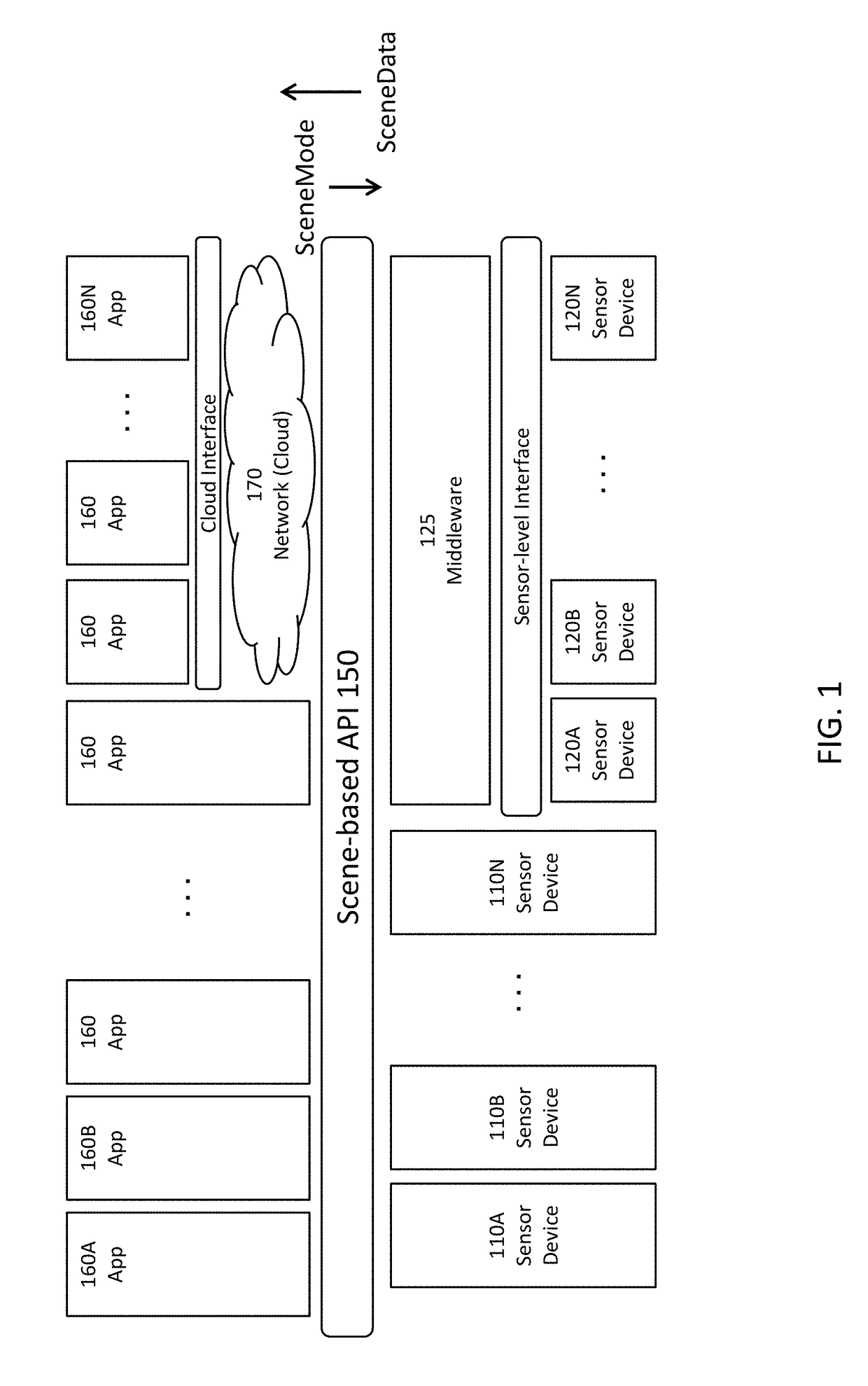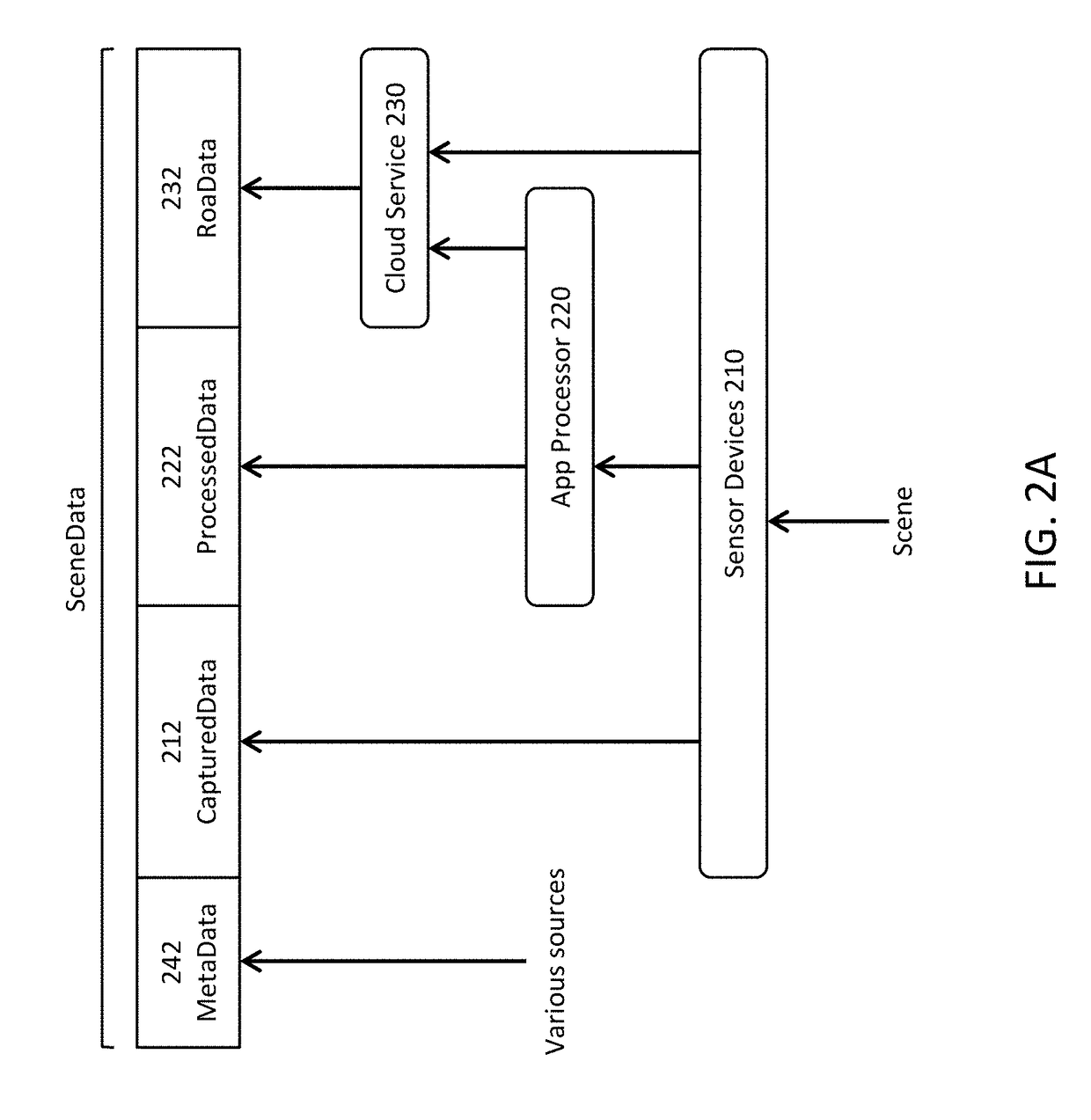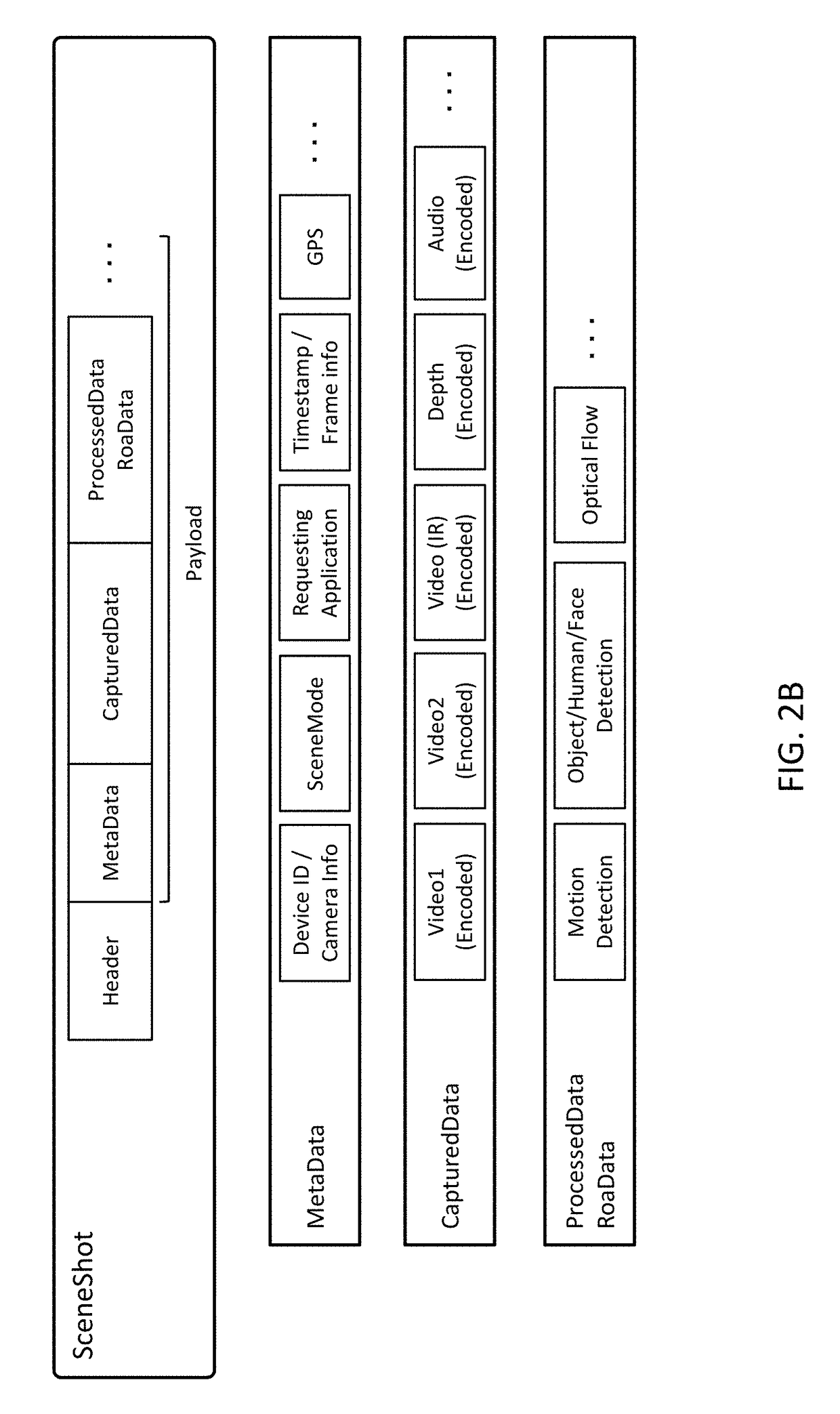Scene-Based Sensor Networks
a sensor network and scene technology, applied in the field of sensor devices, can solve the problems of large amount of data storage wasted, no mechanism to facilitate computing to interact, and most data from cameras not being processed in real tim
- Summary
- Abstract
- Description
- Claims
- Application Information
AI Technical Summary
Benefits of technology
Problems solved by technology
Method used
Image
Examples
Embodiment Construction
[0030]The figures and the following description relate to preferred embodiments by way of illustration only. It should be noted that from the following discussion, alternative embodiments of the structures and methods disclosed herein will be readily recognized as viable alternatives that may be employed without departing from the principles of what is claimed.
[0031]FIG. 1 is a block diagram of a technology stack using a Scene-based API 150. In this example, there are a number of sensor devices 110A-N, 120A-N that are capable of capturing sensor data. Examples of sensor devices include cameras and other image capture devices, including monochrome, single-color, multi-color, RGB, other visible, IR, 4-color (e.g., RGB+IR), stereo, multi-view, strobed, and high-speed; audio sensor devices, including microphones and vibration sensors; depth sensor devices, including LIDAR, depth by deblur, time of flight and structured light devices; and temperature / thermal sensor devices. Other sensor ...
PUM
 Login to View More
Login to View More Abstract
Description
Claims
Application Information
 Login to View More
Login to View More - R&D
- Intellectual Property
- Life Sciences
- Materials
- Tech Scout
- Unparalleled Data Quality
- Higher Quality Content
- 60% Fewer Hallucinations
Browse by: Latest US Patents, China's latest patents, Technical Efficacy Thesaurus, Application Domain, Technology Topic, Popular Technical Reports.
© 2025 PatSnap. All rights reserved.Legal|Privacy policy|Modern Slavery Act Transparency Statement|Sitemap|About US| Contact US: help@patsnap.com



